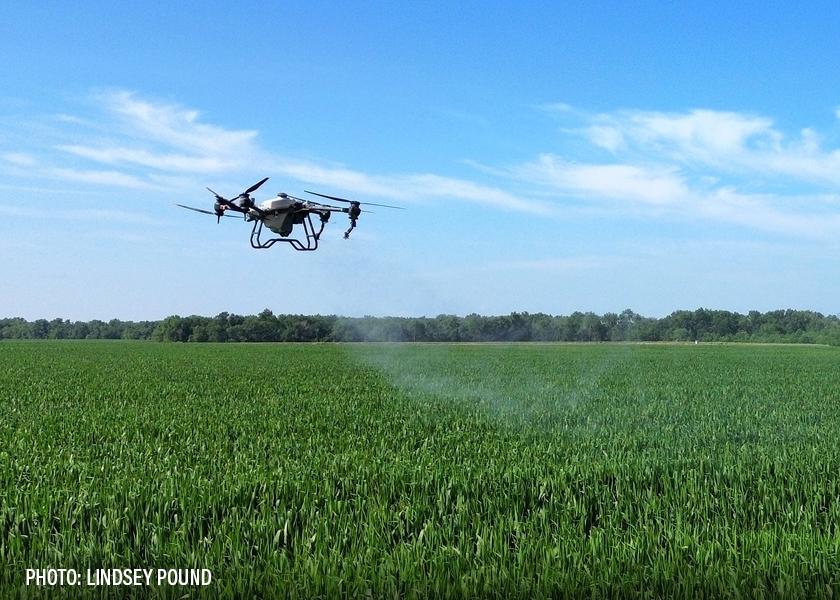Helpful Tips For Using Adjuvants In Spray Drones

As the use of spray drones grows in popularity throughout the agriculture industry, the technology is not without its challenges.
According to Johnnie Roberts, CPDA director of application – adjuvant chemistry, some of those challenges include:
- lack of agitation
- foaming issues due to low spray volumes
- pray drift
- droplet bounce or lack of spreading
One method Roberts suggests using to resolve these issues is adding an adjuvant.
“We currently have a whole range of non-ionic and organic silicone-type adjuvants that can reduce spray droplet bounce and increase coverage, we have compatibility and foam reduction agents, and we also have a wide range of drift reduction and deposition agents,” he says.
Due to ongoing research and the large number of variables, Roberts adds there isn’t a one-size-fits-all adjuvant for spray drones – the decision should be made on a case-by-case scenario.
“There's a lot of variables in play that may make this a more custom approach for the type of application that we're making,” he says. “No. 1 is what is the problem? Are you having foam issues? Is it a coverage issue? Is it one that's related to drift and evaporation compatibility? There's a lot of commercial materials on the market today that are designed to address each one of those.”
Adjuvant Formulation Considerations
For those experiencing foam issues in drone-based application, Roberts suggests using an oil-based adjuvant over the ones based on surfactant. But at the same time, spray uniformity should be top of mind due to the lack of agitation in a spray drone.
“If you would have an oil-based system or oil-based adjuvant, that spray mixture should be uniform for at least 10 minutes, because we don't have the luxury of high agitation to keep it in suspension,” Roberts says.
He also recommends adding a compatibility agent to spray mixtures that include fertilizer before adding the pesticide – though its use may differ than what you’ve used in a traditional sprayer.
“A lot of these compatibility agents have the ability to disperse spray mixtures, but they're also going to make for a low level of suspension. It’s not an issue in conventional sprayers with plenty of good agitation, but it could be one in a drone application so this is something that you will need to do and see in a jar test,” Roberts says. “It may be an issue of just adjusting the compatibility agent rate lower than what you traditionally did. But again, a certain amount of testing the water before we jump in is going to be necessary in some of these spray mixes.”
Use Rates and Regulations
Before putting your spray drone into action, remember the product being used needs to be labeled for aerial application, and the label requirements for spray volume, droplet size and drift must still be followed. Roberts also recommends checking your state’s specific requirements.
“The federal EPA has left this somewhat open with the states adding their own rules on this,” he says. “So, it'll always be a necessity to follow this rule of only using materials approved for aerial application and to verify that that particular state does not have any additional restrictions on that application.”
In drone applications, the rate of adjuvant used is dependent on the spray application volume applied. To determine the adjuvant delivered in ounces/acre, Roberts shares the following formula:
(128/gallon) (gallons/Acre) (% by volume) = adjuvant in oz/acre
Related Stories:







